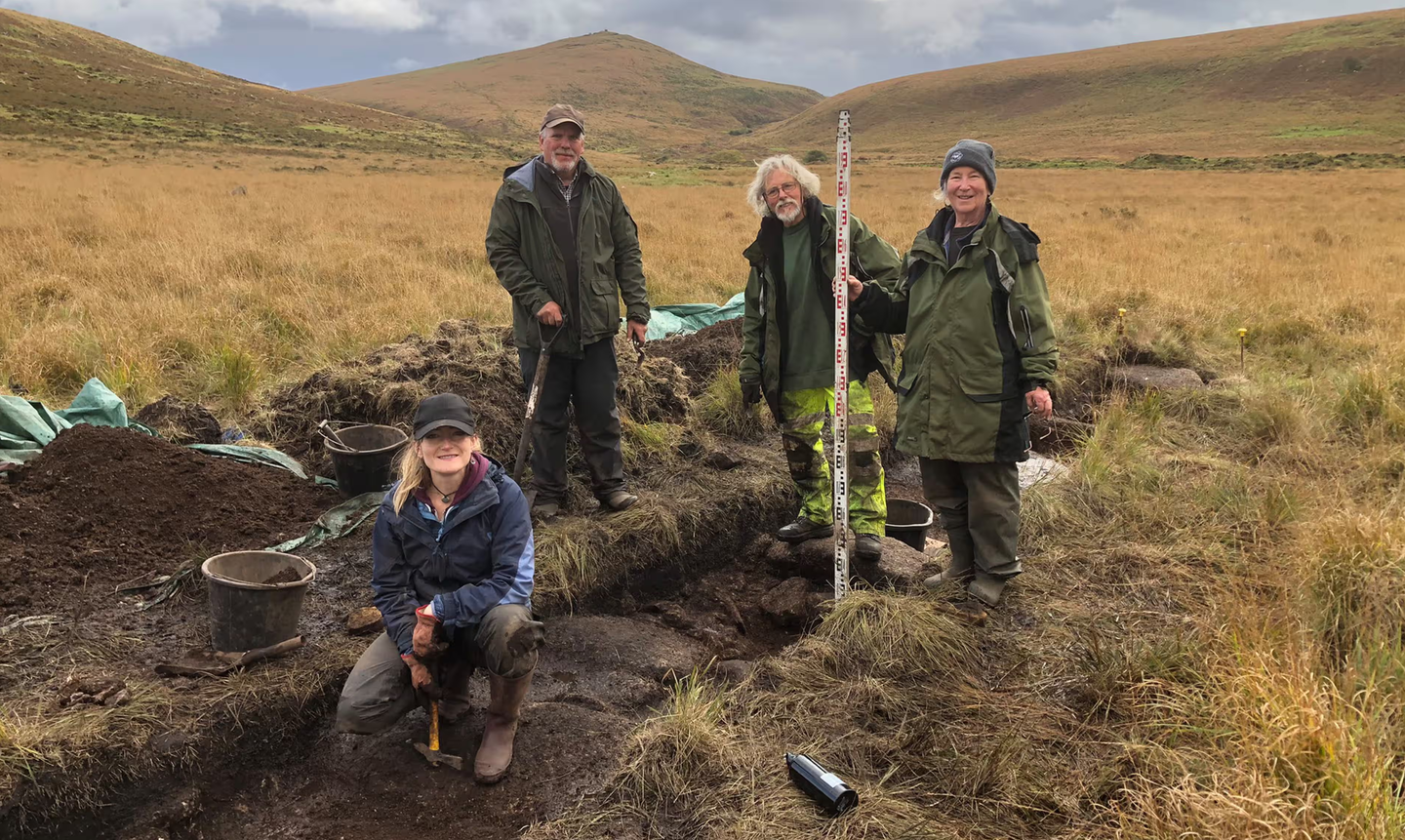Ancient DNA reveals human migration patterns during the first millennium
Genetic research has shed new light on the complex migrations and interactions that shaped Europe’s history during the first millennium CE.

Twigstats uncovers hidden migrations in Europe’s first millennium, offering unprecedented insights into genetic history with cutting-edge genealogy analysis. (CREDIT: CC BY-SA 4.0)
Advancements in genetic research have shed new light on the complex migrations and interactions that shaped Europe's history during the first millennium CE.
Using a groundbreaking method known as Twigstats, researchers have untangled the genetic threads of ancient populations, revealing details previously obscured by the genetic similarity of historical groups.
Published in the journal, Nature, this revolutionary technique has reshaped our understanding of Europe’s genetic past, offering new clarity on how ancient peoples moved and mingled.
At the core of this new approach is the analysis of genealogical relationships through f-statistics, which measure how mutations are shared between individuals. Twigstats refines these calculations by focusing on recent coalescences—points where genetic lineages converge. This time-restricted approach eliminates noise from older genetic events, offering a clearer view of recent ancestry without bias.
F-statistics traditionally relied on observed mutations to map ancestry, but Twigstats leverages inferred genealogies, reconstructing the genetic tree with unprecedented precision. By examining the "twigs" of these trees, researchers can isolate recent genetic interactions, even when they occur between closely related groups. Simulations show that Twigstats reduces standard errors tenfold and enhances the power to detect subtle admixture events.
Twigstats’ effectiveness lies in its ability to analyze inferred genealogies, accounting for all genetic variants within a region. By integrating young mutations and resolving local haplotypes, this method increases statistical power significantly. Unlike traditional SNP-based methods, Twigstats minimizes the impact of sequencing and phase-switch errors, ensuring robust ancestry estimates across diverse datasets.
This innovation addresses challenges posed by sequence and phase-switch errors, which often compromise traditional single-nucleotide polymorphism (SNP) studies. By leveraging full genealogies, Twigstats also avoids biases that arise from variable population sizes, ensuring robust ancestry estimates across diverse datasets.
Applying Twigstats to over 1,500 ancient genomes has unveiled detailed insights into Europe’s genetic history. For instance, researchers revisited the migrations of Germanic-speaking groups during the Iron Age. These populations moved southward from Scandinavia and Northern Germany, leaving genetic traces in Southern Germany, Italy, Poland, and even Britain. One individual in southern Europe displayed exclusively Scandinavian ancestry, underscoring the reach of these migrations.
Historical accounts of Germanic tribes clashing with the Roman Empire find genetic corroboration here. The admixture of these migrating groups with local populations aligns with linguistic and cultural patterns, such as the development of modern German and English from one branch of Germanic languages.
These findings challenge long-standing historical assumptions, illustrating that genetic evidence can provide a richer and more nuanced perspective on ancient history.
Related Stories
In addition to tracing southward migrations, Twigstats has revealed patterns of population mixing that highlight the interconnectedness of ancient communities. The discovery of Scandinavian ancestry in Britain, predating both the Anglo-Saxon and Viking periods, underscores the complexity of ancient migration dynamics.
Twigstats has also revealed northward migration patterns preceding the Viking Age (c. 800–1050 CE). Central European ancestry began appearing in Scandinavia between 300 and 800 CE, suggesting a significant demographic shift. Archaeological evidence from sites like Öland, Sweden, indicates that individuals with Central European ancestry grew up locally, suggesting sustained population movements rather than isolated events.
These migrations coincide with archaeological signs of conflict in Scandinavia, which may have driven people to relocate.
While further studies are needed to fully understand these movements, the genetic evidence paints a vivid picture of Scandinavia as both a source and recipient of migratory waves during this period. These discoveries also hint at possible social and environmental pressures that influenced population dynamics, such as resource scarcity, climate changes, or shifting political landscapes.
By examining genetic interactions over centuries, researchers can link major historical events to underlying genetic patterns. For example, Twigstats provides evidence for multiple waves of migration, offering insights into how different groups contributed to Scandinavia’s genetic makeup over time. This interplay of migration and genetic exchange created a dynamic and ever-changing population landscape.
Beyond migrations, Twigstats has clarified debates around Neanderthal admixture in early human history. Using time-restricted genealogies, researchers distinguished between long-standing genetic substructures and recent interbreeding events. Results suggest that Neanderthal ancestry in modern Eurasians stems from punctual admixture, not deep population substructure, around 60,000 years ago.
Twigstats has also improved resolution in well-studied models of prehistoric admixture involving Mesolithic hunter-gatherers, early farmers, and steppe populations. By analyzing genomes from Neolithic Europe, researchers replicated findings of fine-scale population structures, such as differences between individuals buried in Irish megalithic tombs. These results highlight Twigstats’ ability to uncover nuanced genetic relationships previously undetectable with SNP-based methods.
In early medieval Europe, researchers analyzed genomes spanning the Roman and Iron Ages to understand genetic patterns during the Migration Period (4th to 6th centuries CE). Distinct streams of Scandinavian-related ancestry spread across Europe during this time, later fading or merging with local populations in subsequent centuries. Twigstats revealed details such as the genetic diversity of Viking Age Scandinavians and their interactions with Central European groups.
One notable application of Twigstats involves reconstructing ancestry models for early medieval Europe. Researchers analyzed genomes spanning the Roman and Iron Ages to understand genetic patterns during the Migration Period (4th to 6th centuries CE). They discovered distinct streams of Scandinavian-related ancestry spreading across Europe and observed its subsequent decline in later centuries.
In Britain, genetic data from Roman-era York revealed individuals with Scandinavian ancestry predating the Anglo-Saxon and Viking periods. One such person, possibly a Roman soldier or slave gladiator, underscores the complexity of cultural and genetic interactions in ancient societies. Similarly, Viking Age mass graves in Britain contained remains genetically tied to Denmark, reflecting historical accounts of raiding and settlement.
Twigstats also illuminated the Viking Age’s genetic legacy. Across Europe, populations exhibited mixed local and Scandinavian ancestry. For example, individuals in present-day Ukraine and Russia carried genetic markers linked to Sweden, while Viking-age mass graves in Britain contained remains genetically tied to Denmark. These findings align with historical accounts of Viking raiding and settlement.
By integrating genetic data with archaeological and historical records, Twigstats creates a comprehensive picture of Europe’s genetic history. The tool’s ability to resolve complex genetic interactions has profound implications for the study of ancient civilizations. It opens doors to questions about social structures, cultural exchanges, and the long-term impacts of migration.
The broader implications of Twigstats extend beyond Europe. By refining the analysis of genealogical relationships, this method offers a powerful tool for exploring genetic histories worldwide. As researchers expand the database of ancient whole-genome sequences, questions once deemed unanswerable now come within reach.
“Twigstats allows us to see what we couldn’t before,” says Leo Speidel, a lead researcher. “This method can reveal migrations and interactions that were invisible to previous approaches.” Pontus Skoglund, a senior author, adds, “Our goal was to develop a sharper lens for fine-scale genetic history. With Twigstats, we’re closer to completing the puzzle.”
Twigstats exemplifies how technology transforms our understanding of the past. By combining genetic data with archaeological and historical records, this method provides a high-resolution lens into humanity’s shared story, bringing forgotten migrations and interactions to light.
Note: Materials provided above by The Brighter Side of News. Content may be edited for style and length.
Like these kind of feel good stories? Get The Brighter Side of News' newsletter.
Rebecca Shavit
Science & Technology Journalist | Innovation Storyteller
Based in Los Angeles, Rebecca Shavit is a dedicated science and technology journalist who writes for The Brighter Side of News, an online publication committed to highlighting positive and transformative stories from around the world. With a passion for uncovering groundbreaking discoveries and innovations, she brings to light the scientific advancements shaping a better future. Her reporting spans a wide range of topics, from cutting-edge medical breakthroughs and artificial intelligence to green technology and space exploration. With a keen ability to translate complex concepts into engaging and accessible stories, she makes science and innovation relatable to a broad audience.



